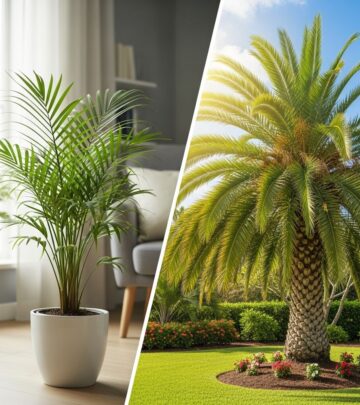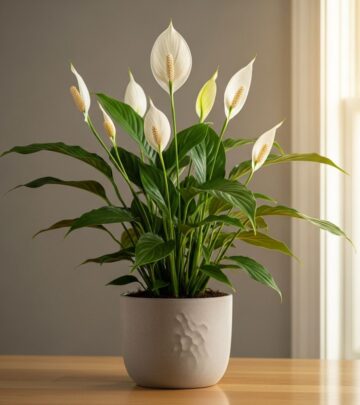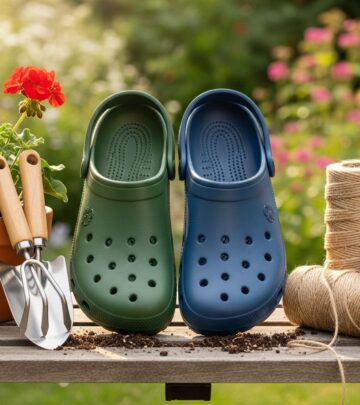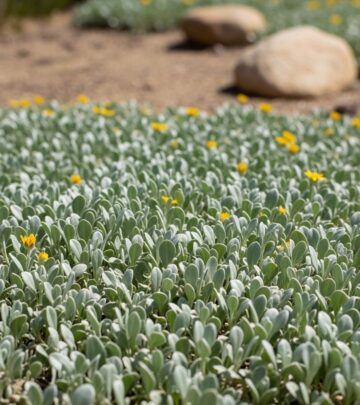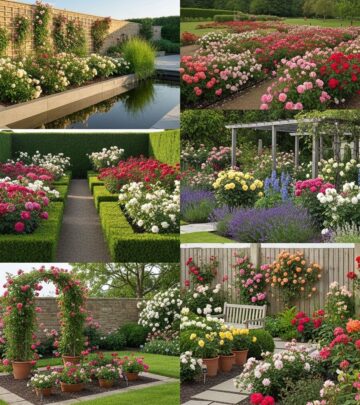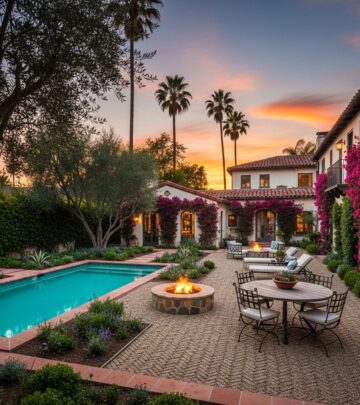Cottage Garden Ideas: Expert Tips For A Dreamy Outdoor Retreat
Explore timeless tips, plant selections, and design inspiration to create your own flourishing cottage garden oasis.
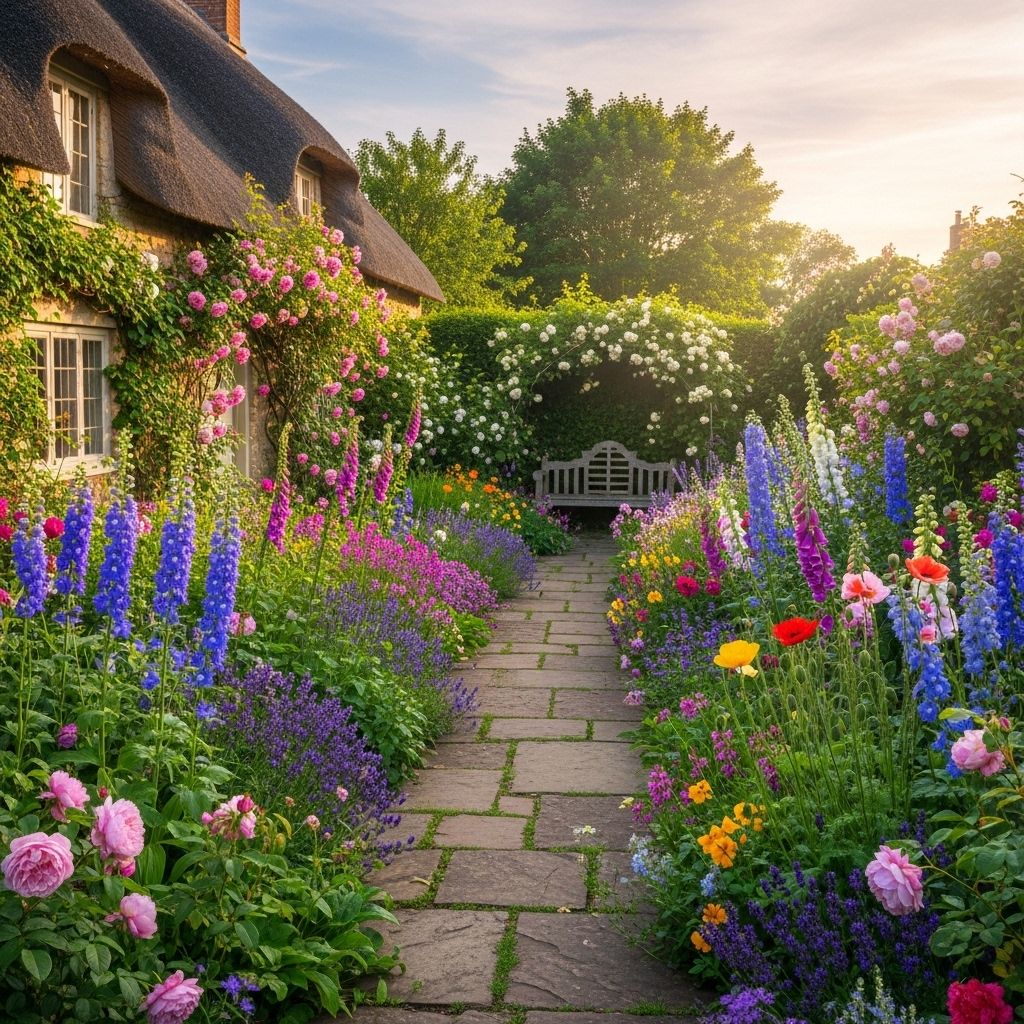
Image: HearthJunction Design Team
Cottage Garden Ideas: Creating a Dreamy Outdoor Retreat
Cottage gardens have captivated garden enthusiasts for centuries with their wild abundance, nostalgic charm, and natural beauty. Rooted in tradition yet adaptable to any yard, a cottage garden blends exuberant flowers, textured foliage, winding paths, and inviting nooks to evoke a sense of relaxed romance. Whether you’re revamping a front yard or building a new backyard sanctuary, these expert cottage garden ideas and timeless tips will help you cultivate a lush, thriving space to enjoy year after year.
What is a Cottage Garden?
A cottage garden is characterized by rich, layered planting, curved lines, and a harmonious blend of ornamental and edible plants. The style is informal and welcoming—think overflowing flower beds, climbing roses, aromatic herbs, and meandering pathways—all designed for beauty, wildlife, and practicality. The magic lies in the mix: annuals, perennials, shrubs, herbs, and sometimes vegetables all jostle together in a riot of color and form.
Essential Elements of the Cottage Garden
- Densely Planted Borders: Beds brim with a blend of flowers, herbs, and small shrubs, leaving little to no exposed soil.
- Curved Lines & Natural Pathways: Gentle, swooping paths guide you through the garden, often bordered by low-growing blooms or fragrant herbs.
- Use of Natural Materials: Edging, fences, and arbor structures are made from rustic wood, stone, or repurposed vintage items.
- Mixture of Ornamental & Edible Plants: Useful herbs and vegetables mingle with colorful buds, reinforcing the garden’s dual nature.
- Wildlife-Friendly Planting: Nectar-rich flowers and fruiting shrubs attract bees, butterflies, and birds.
Planning Your Cottage Garden: Where to Start
Success starts with thoughtful planning and a bit of self-reflection. Before breaking ground, ask yourself:
- How much space do I have to work with?
- Do I want to incorporate herbs, vegetables, or medicinal plants?
- Should my garden support local pollinators and wildlife?
- Will I use cut flowers for indoor arrangements?
- Is fragrance or seasonal color more important to me?
- Do I need walkways for easy access?
These questions will help shape your plant list and garden layout, ensuring your space suits your lifestyle and climate.
Designing the Layout: Paths, Edges, and Focal Points
Curved Paths and Flow
Traditional cottage gardens embrace soft, meandering walkways crafted from gravel, brick, stepping stones, or bark. Winding paths not only guide you through lush borders but also add visual interest and make small spaces feel larger. Place the smallest plants along the edges and graduate to taller varieties as you move outward. This layering ensures every plant is visible and contributes to a tapestry of color.
Defined Edges and Hidden Nooks
Use natural materials like stone, timber, or woven willow to edge beds and paths. Frames keep rampant growth in check and highlight the garden’s informal charm. Incorporate small seating areas, secluded benches, or a vintage bistro set among the blooms to invite quiet reflection or a cup of afternoon tea.
Focal Points and Vertical Interest
- Install arbors, pergolas, or trellises to support climbing roses, clematis, or honeysuckle.
- Use birdbaths, sundials, or vintage containers as eye-catching centerpieces.
- Let fruit trees or small flowering trees serve as living focal points surrounded by low-growing beds.
Building the Foundation: Soil, Water, and Light
Preparing the Soil
Rich, loamy soil is the bedrock of a thriving cottage garden. Test your soil’s pH and amend it with compost or aged manure to boost fertility. Annual applications of organic mulch help retain moisture and suppress weeds.
Watering Wisely
Invest in a drip irrigation system or soaker hoses to deliver moisture directly to roots—this minimizes disease and conserves water. Watering early in the morning or evening is best for plant health.
Light Requirements
Most classic cottage garden plants prefer full sun to part shade. Observe your site’s light patterns and group plants based on their sunlight needs for optimal growth.
Choosing the Best Plants for Cottage Gardens
The hallmark of a classic cottage garden is a diverse mix of lush, flowering plants interspersed with foliage for texture and interest. Remember: repetition creates rhythm, while variety ensures year-round appeal.
Popular Cottage Garden Flowers
- Roses (especially old-fashioned and rambling types)
- Foxgloves (Digitalis)
- Delphiniums
- Hollyhocks
- Peonies
- Lavender
- Sweet peas
- Irises
- Poppies
- Cosmos
- Phlox
Structural and Edible Plants
- Boxwood or clipped evergreens for formality amid informality
- Fruit trees (apples, pears, cherries) for vertical structure and harvest
- Herbs (thyme, sage, chives) for edging paths
- Vegetables (lettuce, kale, beans) tucked into sunlit corners
Wildlife-Friendly Options
- Flowering shrubs (lilac, hydrangea) for nesting and shelter
- Nectar-rich annuals (nasturtiums, calendula) to entice bees and butterflies
- Seed-bearing plants (echinacea, coreopsis) to feed songbirds
Planting Tips for a Flourishing Cottage Garden
Start Small, Layer Gradually
It’s tempting to tackle an entire landscape at once, but cottage gardens reward patience. Begin with a manageable area, adding more plants each season as you learn what thrives in your conditions.
Group for Impact, Repeat for Flow
- Mass plantings (groups of three, five, or seven of the same variety) create visual impact.
- Repeat colors and plant types throughout borders for a cohesive look.
- Mix heights and textures—tall spires at the back, bushy mid-levels, and low ground covers at the edge.
Soil and Mulch Maintenance
Top up beds annually with compost or organic mulch. This boosts fertility, retains moisture, and keeps weeds at bay.
Efficient Watering
Install drip hoses or mini-sprinklers at ground level to keep water off leaves and reduce fungal issues.
Color and Fragrance
Choose a harmonious color palette—pink, mauve, blue, or pure white—mixed with the silvery greens of foliage. Include fragrant blooms like lavender, roses, and sweet peas to delight the senses.
Creative Cottage Garden Ideas and Inspiration
Lose the Lawn
Traditional grassy lawns often give way to flowering ground covers and densely planted borders, maximizing color and biodiversity.
Fill All Gaps
Let planting spill to the path’s edge. Fill every bit of soil with cascading blooms, herbs, or creeping ground covers.
Frame Trees with Flowers
Plant perennials and bulbs in large drifts around tree bases for year-round color and interest.
Raised Beds and Containers
- Install raised beds to introduce order among the chaos and improve soil quality.
- Use vintage containers and repurposed vessels for movable bursts of color.
Vertical Wonders
- Add trellises, obelisks, or arches for climbing plants like roses, clematis, and honeysuckle.
- Grow overhead vines or espaliers along fences for extra privacy and lushness.
Wildflower Meadows
Dedicate a patch to native wildflowers for low-maintenance color and vital wildlife habitat.
Blur Boundaries
Let planting soften fences and walls, blurring the lines between garden and nature beyond.
Invite Wildlife
- Plant single-flowered varieties for easy nectar access.
- Add small water features, birdbaths, or nesting boxes to welcome pollinators and birds.
Personal Touches: Make It Your Own
- Choose a signature color scheme or theme (vintage, romantic, woodland, etc.).
- Add garden art, old signage, or upcycled furniture for whimsy.
- Include secluded seating for reading or reflection.
- Display collections—such as antique watering cans or ceramic pots—amid the blooms.
Maintaining Your Cottage Garden
Simple, Regular Care
Although designed to look effortless, cottage gardens benefit from seasonal attention:
- Deadhead spent blooms to encourage reblooming.
- Stake tall plants to prevent flopping after storms or heavy rain.
- Mulch annually and fertilize as needed.
- Thin self-seeded plants to avoid overcrowding.
Pruning and Dividing
- Prune shrubs and climbers seasonally for shape and health.
- Divide perennials every few years to maintain vigor and fill gaps.
Frequently Asked Questions (FAQs)
What is the best time of year to start a cottage garden?
The ideal time to start planting is in early spring or fall, when temperatures are mild and rainfall is more abundant. Perennials and shrubs can be established in autumn, allowing roots to settle before summer heat, while annuals are best sown in spring.
Can I have a cottage garden in a small yard?
Absolutely! Cottage gardens scale beautifully to patios, courtyards, or narrow spaces. Use vertical elements, raised beds, and container groupings to maximize impact in compact areas.
Are cottage gardens low maintenance?
While cottage gardens are less formal and more forgiving than manicured borders, they still require seasonal care—especially weeding, deadheading, and mulching. Choosing resilient, low-maintenance plants can reduce regular tasks.
Which plants are best for attracting pollinators?
Choose classic nectar-rich plants like lavender, foxglove, echinacea, salvia, and single roses. Avoid highly double-flowered varieties, which can be harder for bees to access.
How do I control pests and diseases in a cottage garden?
Encourage biodiversity, plant disease-resistant varieties, and avoid overcrowding. Attract beneficial insects (like ladybugs and lacewings) and use organic pest control methods such as neem oil or insecticidal soap when needed.
Conclusion
With its joyful blooms, lush textures, and welcoming atmosphere, the cottage garden is a living celebration of nature’s abundance. Whether you embrace tradition or add your own creative twist, the cottage garden’s magic lies in its variety, generosity, and ever-changing tapestry. Begin with just a few plants and a winding path, and soon you’ll have a thriving sanctuary that delights in every season.
References
Read full bio of medha deb




